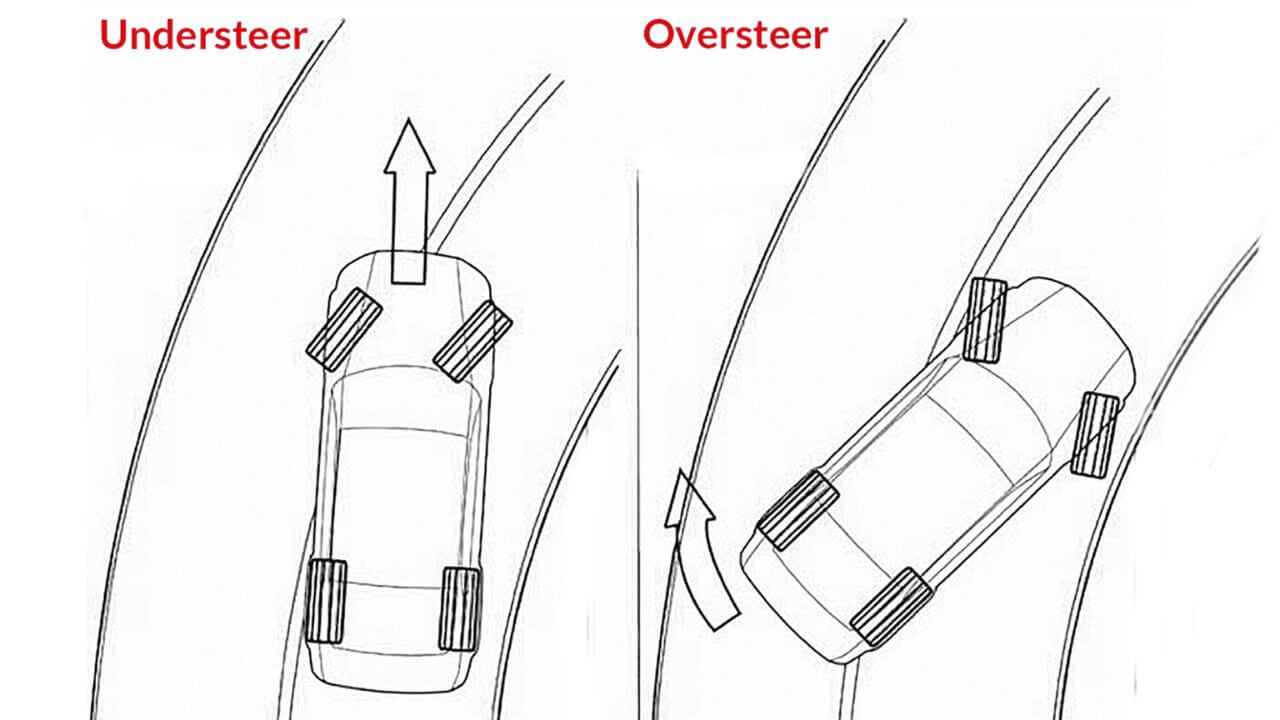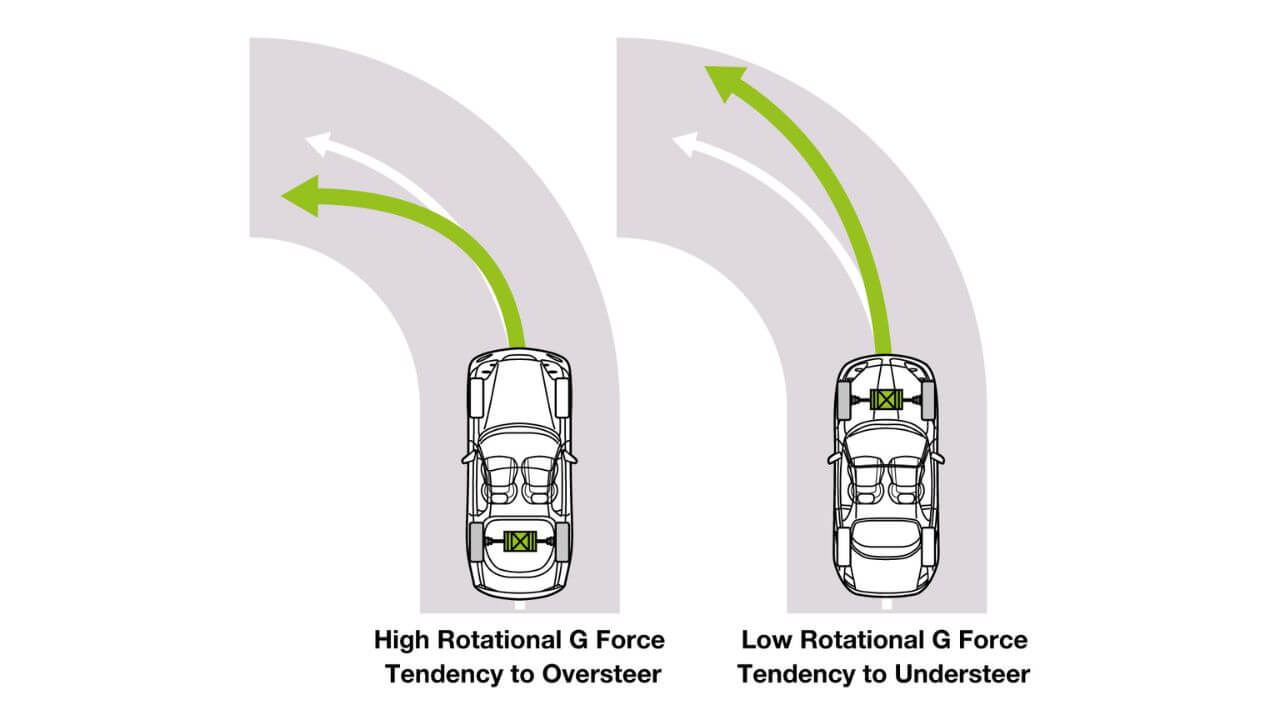Explore the critical differences between understeer and oversteer, how these vehicle dynamics affect driving safety and performance, and expert advice on managing them effectively.
Understeer vs Oversteer, When driving, understanding how a vehicle behaves during cornering is vital for both safety and performance. The terms understeer vs oversteer describe two different ways a car can respond when turning. These phenomena affect how much control a driver has, particularly during sudden or high-speed cornering. This article breaks down these concepts, examining the physics behind them, their effects on driving, and practical strategies for recognizing and fixing each situation. For drivers, enthusiasts, and engineers, knowing the details of understeer vs oversteer is key to controlling vehicles and improving road safety.
Understanding Understeer and Oversteer: Definitions and Basic Concepts

In understeer scenarios, the front tires lose traction first, making it hard for the vehicle to turn sharply. This is common in front-wheel-drive cars since the front tires handle both steering and power, which can strain their grip. Understeer feels like the steering wheel is “too loose” or the car is “pushing” wide during turns.
On the other hand, oversteer occurs when the rear tires lose grip first, causing the rear to swing out. Rear-wheel-drive cars and high-performance vehicles often display oversteer, especially under aggressive acceleration or braking in corners. Oversteer needs quick driver action to avoid spins.
Renowned rally driver Walter Röhrl illustrated the challenges of these conditions, stating, “If you see the tree you are driving into, you have understeer. If you don’t see the tree, you have oversteer.” This vivid phrase highlights the risks and driver awareness of each condition.
The Physics of Understeer vs Oversteer: Forces and Vehicle Behavior

Understeer happens when the front tires exceed their cornering force capacity, causing the vehicle to drift outward from the curve. The car resists changing direction, effectively “plowing” through the corner instead of following the desired path. The front tire grip limit is influenced by vehicle load, tire condition, speed, and road surface.
Oversteer, in contrast, occurs when the rear tires lose grip first. This leads to the rear end yawing away from the direction of travel, resulting in a sharper turn than expected. Weight transfer plays a significant role here—the rear can lose traction, especially during sudden acceleration, braking, or steering inputs in the middle of a turn.
Vehicle setup, such as suspension stiffness, tire types, and drive layout (front-, rear-, or all-wheel drive), directly affects these dynamics. For instance, a heavier front axle tends to promote understeer, while a rear-heavy balance leads to oversteer. The concept of understeer gradient shows how steering response changes with lateral acceleration.
Driver Safety and Corrective Actions
From a safety standpoint, understeer and oversteer pose different challenges. Understeer, while common and easier to control, can push the car off the road at corners. The safest driver response is to reduce speed smoothly, ease off the accelerator, and slightly straighten the steering wheel to let the tires regain traction. Abrupt movements can make the situation worse or cause loss of control.
Oversteer is typically more dangerous, especially for inexperienced drivers, because it can quickly lead to a spin. Corrective action requires an immediate and controlled counter-steer—turning the steering wheel toward the rear-end slide. Drivers must modulate throttle inputs carefully, avoiding sudden braking or abruptly lifting off the pedal, as quick weight shifts can worsen oversteer.
Modern stability control and traction control systems significantly reduce the chances of severe understeer or oversteer by automatically adjusting brakes and engine power. However, knowing how to respond without relying on electronics is still important, particularly in bad weather or off-road conditions.
Vehicle Design, Drive Layout, and Technological Influences
Vehicle design greatly influences whether a car tends toward understeer or oversteer. Front-wheel-drive vehicles typically tend toward understeer since the front tires both steer and deliver power. Rear-wheel-drive vehicles are more likely to oversteer as power sent to the rear wheels can overwhelm grip in corners, especially on slippery surfaces.
Four-wheel drive and all-wheel drive systems provide better grip balance and can moderate both conditions but don’t eliminate them entirely. Engineers adjust handling characteristics through suspension tuning, anti-roll bars, tire choices, and weight distribution to create predictable and safe vehicle behavior.
Race cars often use slight oversteer setups to maximize agility and cornering speed, requiring highly skilled drivers to manage these dynamics. Consumer cars, in contrast, are typically designed with mild understeer to enhance stability and lower accident risks on public roads.
Expert Perspective on the Dynamics
Dr. John C. Stennis, a leading researcher in automotive vehicle dynamics, emphasizes: “Understanding and managing understeer and oversteer is essential not only for peak vehicle performance but also for driver safety. The dynamic interplay of tire forces, weight transfer, and driver inputs makes mastering these behaviors crucial for all drivers.”
His observation highlights that understeer and oversteer are not just technical terms; they are practical realities that every driver needs to understand to maintain control and safety under all driving conditions.
Results: Mastering Understeer vs Oversteer for Safer Driving
In summary, understeer and oversteer define how a vehicle responds to steering inputs in corners, affecting the driver’s ability to control the car safely and accurately. Understeer means the front wheels are losing grip and going wide, while oversteer indicates the rear wheels losing traction, causing the car to turn too sharply or spin. Both conditions arise from complex interactions of tire forces, vehicle design, driver inputs, and road conditions.
Drivers can improve their safety and confidence by understanding these dynamics, practicing corrective techniques, and recognizing vehicle limits. While modern automotive technologies help manage these situations, they do not replace the importance of good driving knowledge and skill.
Understanding the intricacies of understeer and oversteer turns driving from a basic task into a controlled experience, allowing drivers to anticipate, respond, and enjoy the road safely.

